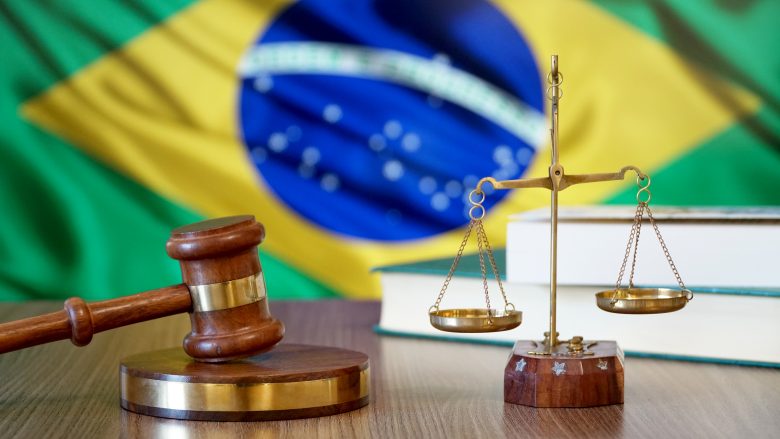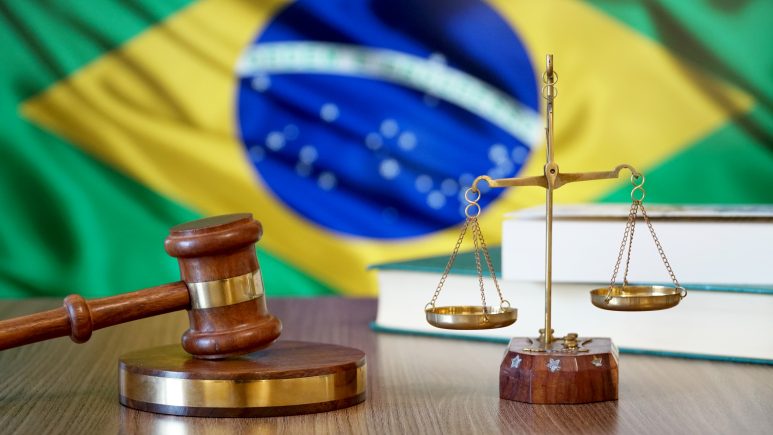By Raphael Tsavkko Garcia, journalist, editor and PhD in Human Rights
In a landmark ruling on 29 November 2023, Brazil’s Supreme Federal Court (STF) redefined the parameters for holding media organisations accountable in cases involving interviews that falsely attribute crimes to individuals. The case that triggered this pivotal decision dates back to 1995 when the Diário de Pernambuco newspaper published an interview accusing former Brazilian congressman Ricardo Zarattini Filho of involvement in a 1966 bomb attack. Crafted by Justice Alexandre de Moraes and refined by other justices, the ruling aims to strike a delicate balance between press freedom and civil responsibility. But it might backfire.
According to the decision, if the press publishes an interview where the interviewee falsely accuses a third party of committing a crime, the media company can only be held civilly liable if, at the time of publication, there was concrete evidence proving the accusation false, and if the media outlet neglected its duty to verify the accuracy of the facts and failed to disclose the existence of such evidence.

The responsibility of the media
Charlene Nagae, executive director of Tornavoz, an association that aims to provide legal defence to those who are sued due to exercising freedom of thought and expression, explains that it is “very concerning because it modifies an understanding that was already consolidated in Brazilian jurisprudence that a communication vehicle could not be held responsible for the content of statements made by interviewees.”
This decision has ignited concerns within Brazil’s media landscape, with the National Association of Newspapers (ANJ) seeking clarity on terms such as “concrete evidence” and the practical application of the ruling, particularly in live interview scenarios. Some experts fear that the STF’s decision might usher in a new era of censorship and self-censorship against newspapers and media outlets or even that the decision is just impossible to enforce.
In contrast, a few, such as Justice Luís Roberto Barroso, who voted in favour of the decision, view it as a necessary step towards imposing accountability. Current president of the court, Justice Barroso, asserted during a plenary session that media companies would only be held accountable for false accusations in cases of deliberate intent, bad faith, or grave negligence.
However, Renzo Mora, a writer and journalist, voiced his apprehension, stating, “I find the law complicated. Firstly, I find it difficult to judge whether there was intent on the part of the journalist in disseminating false information. Secondly, I believe that an interviewee who deliberately lies is also creating news.” For instance, he says “a vaccine denier can be held accountable when we expose his position on the matter. This alerts the public opinion. The interviewee can and should be exposed when the media has access to true information and the reasons behind his false statement—be it prejudice, economic or electoral motives, or ignorance.”
Finally, Mora states that “it is not up to us, journalists, to protect the interviewees. Rather, we must present their lies and ensure that they are portrayed truthfully to the public. If we censor them, the public will not know their ideas—and it is our duty to reveal the personalities we interview.”
It’s unknown how a judge will be able to decide if a newspaper did its due diligence prior to the publication of an interview and, again, there’s also the issue of a live interview. Should it be censored or broadcast with a delay to avoid any problems with the law?
Giuliano Galli, the Executive Coordinator of Journalism and Freedom of Expression at the Vladimir Herzog Institute, stressed that he thinks “it’s too hasty to say that journalists will change the way they do interviews or that they will give up scoops as a way of protecting themselves”. “In fact, the STF’s decision sets a precedent for us to imagine that this could happen, but I think it’s still a very vague assumption.”
Nagae, however, states that “in a country with increasing episodes of judicial harassment against journalists, it becomes even more serious that this change occurs without the complexity and nuances of the issue having been thoroughly analysed”.
The impact on minorities
Minority communities, often subject to police persecution and violence, rely on media platforms to amplify their voices and raise awareness about their experiences. Any restrictions on journalistic freedom resulting from this ruling could hinder their ability to denounce injustices and advocate for their rights.
Fear of legal repercussions for publishing interviews containing false accusations could deter journalists from covering stories that shed light on systemic discrimination or human rights abuses faced by minority groups and if media outlets become overly cautious about publishing interviews that involve minority voices, it could exacerbate existing disparities in media coverage and perpetuate stereotypes and misconceptions.
Galli notes that the full judgement hasn’t been published yet, therefore, “we can’t ignore the fact that both in their votes and in other public statements, several Justices have made statements that somewhat restrict the possibility that the ruling represents some kind of prior censorship of journalistic work”.
Carla Egydio, Director of Institutional Relations at the Digital Journalism Association (Ajor), however, highlighted the phenomenon of judicial harassment of the press, characterising it as a strategy aimed at intimidating and persecuting journalists and media organisations. She says the country “needs to provide effective responses to limit this abusive practice whose main objective is to limit the exercise of journalism”.
She noted that data from the Ctrl+X project by the Brazilian Association of Investigative Journalism (Abraji) recorded over 6,000 cases of attempted censorship of journalistic content through judicial means over the past decade.
Clarity in the forthcoming publication
Looking ahead, Egydio anticipates clarity in the forthcoming publication of the judgment regarding what constitutes “concrete evidence of the falsity of the accusation” and the “duty of care in verifying the truthfulness of the facts and in disclosing the existence of such evidence”.
Moreover, “the prospect of content removal is worrisome, potentially reinforcing a practice already prevalent in cases where journalistic content is legally challenged. The freedom of the press is a fundamental right that must be upheld, as it contributes to citizens’ right to information and strengthens democracy. It’s imperative to remember that the Brazilian state provides the right of reply as a mechanism to address any subsequent grievances,” says Egydio.
It should be remembered that the press came under heavy attack during the government of the far-right ex-president Jair Bolsonaro, with offences against journalists, especially women, as well as intimidation and attempts at censorship. Galli recalled that, despite occasional errors, “the Supreme Court, especially since Jair Bolsonaro’s government, has been an absolutely fundamental agent in the defence of Brazilian democracy”.
The hope of many is that the Supreme Court will continue to stand up for journalism, but it is dangerous for journalism to depend on the goodwill of a Court whose members are appointed through political channels and in a country where journalists are often targets.
Moving forward, the precise interpretation and application of the ruling, as outlined in the forthcoming judgment, will be critical in shaping its impact on journalistic practices and freedom of expression in Brazil.
Photo Credit: Shutterstock
Disclaimer:
The views and opinions expressed in this article are solely those of the author and do not reflect the official policy or position of the Media Diversity Institute. Any question or comment should be addressed to editor@media-diversity.org

